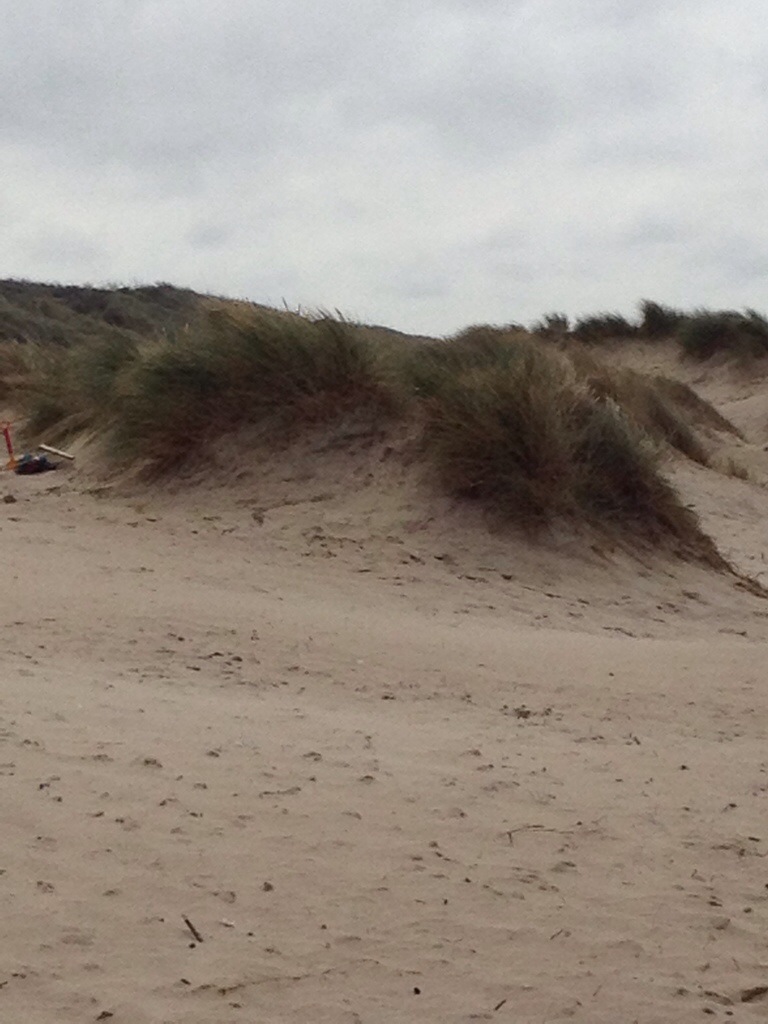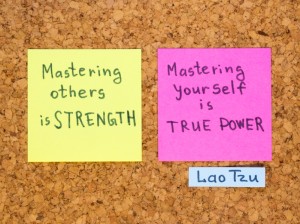
Otto Scharmer points out rightly that a new model of communication is needed, involving all stakeholders and being multilateral. A link needs to be created between all actors in society and economy, consumers to producers, leaders to staff etc. Many parties should join in the conversation, breaking up silos, sharing and opening up in dialogue. Being open and transparent will enable new ideas to emerge and this new connection will be far more effective than any extrinsic, monetary motivation and bonus. Think about it! Join me for a new journey in communications: a mindful one! Jenny
Author: Jenny Ebermann (bxljenny)
The Heart of Effective Leadership
 This weekend, I had the pleasure of attending a “Heart of Effective Leadership” Training given by IofC (Initiatives of Change). Instead of speaking only to the brain, this training focuses on the human being at the center of everything. Change has to come from oneself, i.e. to be an effective leader, you have to tap your own inner source of wisdom.
This weekend, I had the pleasure of attending a “Heart of Effective Leadership” Training given by IofC (Initiatives of Change). Instead of speaking only to the brain, this training focuses on the human being at the center of everything. Change has to come from oneself, i.e. to be an effective leader, you have to tap your own inner source of wisdom.
Apart from amazing people and inspiring stories, I also enjoyed listening to Dr. Feena May from the ICRC (International Committee of the Red Cross). According to her studies and research, the 5 capabilities that make leadership work are:
- Presence – meaning being fully present, with all one has to offer
- Relating to others
- Sense-making – “How can I make sense of the information that I am receiving so that you can make something out of it”
- Taking action
- Service aspect – “Why am I willing to step into this leadership role?” (not to be mistaken with servant leadership); this aspect should always include others and not only ourselves, such as the community, the company, wider organization etc.
Finally, a key take-away for me, which might also be valuable for you, was a quote from Rainer Maria Rilke (Letters to a young Poet, 1903):
“(…) I would like to beg you (…) as well as I can, to have patience with everything unresolved in your heart and to try to love the questions themselves as if they were locked rooms or books, written in a foreign language. Don’t search for the answers, which could not be given to you now, because you would not be able to live them. And the point is, to live everything. Live the questions now.
Perhaps then, some day in the future you will gradually, without even noticing it, live your way into the answer”. – translated from German
Have a great week,
Jenny
Changing reality: You can do it!
 Today, I would like to share with you two very simple concepts that have deeply moved me tonight when I read them in “Leading from the emerging future” from Otto Scharmer and Katrin Kaufer:
Today, I would like to share with you two very simple concepts that have deeply moved me tonight when I read them in “Leading from the emerging future” from Otto Scharmer and Katrin Kaufer:
“(…) form follows attention or consciousness. We can change reality by changing the inner place from which we operate.” (p.146)
This means that if you are able to open up and let go, new ideas and thoughts will emerge… connection to yourSelf is thus the key to growth and fulfillment… it sounds easy but the “letting go” piece definitely needs time – at least for me! You can read more on Scharmer’s “Theory U” here.
Have a great evening or day!
Jenny

Effective Communication: no need to be born with it!
“Communication is a skill that you can learn. It’s like riding a bicycle or typing. If you’re willing to work at it, you can rapidly improve the quality of every part of your life.” – Brian Tracy
Even though communication skills are so important to success in the workplace, there are many individuals who find these skills to be a stumbling block to their progress. They struggle to convey their thoughts and ideas in an accurate manner, making it difficult to move forward and nearly impossible to lead well. Things even get more complicated when communication happens between actors of different cultures through times zones and maybe even virtual means of communication.
However, there is hope for anyone who finds communicating to be difficult! These skills can be practiced and learned. It takes learning about how communication works, how to communicate exactly what it is you want to say, what mode of communication is best, and what factors are influencing the ability for you to send and receive messages with acumen.
Leaders and staff have to first understand the theory and best practices of what effective communication actually is about; then, through role plays and practical examples as well as case studies directly taken from their work environments, they should get a feel about how they communicate (verbally and non-verbally) and how others are perceiving their efforts.
Finally, written communication is a topic on its own and should be looked at separately: knowing what happens in your body when receiving unwanted mails, practicing empathy, and responding mindfully; truly necessary ingredients for any effective communication in the office and elsewhere!
Want to know more? Looking forward to hearing from you,
Jenny
Having one of these days?
 While working and feeling a bit overwhelmed today with all sorts of things happening and different emotions passing by at the same time, suddenly a mail popped up in my inbox. I get quite a lot of newsletters and blog entries on a daily basis, hence am not reading them directly normally. This one though, caught my attention as the first line that I saw read the following:
While working and feeling a bit overwhelmed today with all sorts of things happening and different emotions passing by at the same time, suddenly a mail popped up in my inbox. I get quite a lot of newsletters and blog entries on a daily basis, hence am not reading them directly normally. This one though, caught my attention as the first line that I saw read the following:
“Recognize that you are feeling disturbed, overwhelmed, depressed or some other depleting or negative emotion”.
I thought, oh, yes, ok… I acknowledge that I am feeling kind of disturbed today, maybe I should do something against that and simply send some kindness to myself instead of judging and ruminating.
So I continued reading the newsletter and immediately felt better after some moments of stillness. As we all have our good and less good days, I wanted to share this little exercise with all of you. It is called “Soft Heart Tool” and comes from heartmath.org. Hopefully it will help you too!
- Recognize that you are feeling disturbed, overwhelmed, depressed or some other depleting or negative emotion.
- Acknowledge that it is not these or other emotions that cause you to feel drained or out of sorts as much as it is the significance you give them.
- Find your Soft Heart attitude by intentionally feeling love, care or appreciation for a person, pet or something you truly care about. This helps take you to a soft place in your heart and increases your ability to feel care and compassion for yourself.
- Soak and relax any unwanted feelings in the compassion of your heart, letting the significance dissolve a little at a time. Take your time.
Jenny
The battle with our Selves
 In their book “Leading from the emerging future”, Otto Scharmer and Katrin Kaufer state the following:
In their book “Leading from the emerging future”, Otto Scharmer and Katrin Kaufer state the following:
“The primary battlefield of this century is with our Selves. It is a battle between the self and the Self: between our existing habituated self and our emerging future Self, both individually and collectively.”
According to their research and findings, the battle takes place between what they call absencing and presencing, meaning on one hand the downloading and replicating of habitual behaviours, holding onto the past and not opening our minds, hearts and will, thus being on autopilot; and on the other hand the heightened awareness, openness, letting go of the old and embracing/embodying the new to become more creative again.
To be honest, I for myself am in the middle of this battle currently… downloading and pretending not to listen to my gut feeling is simple, the “let us do as we always did, it’s so much easier” voice in my heat all too present. Very strongly though, I feel that this route is not for me, that there is something else to explore and some fantastic opportunities around the corner waiting to be seized and explored. Although it seems to be easy, letting go and swimming against what is known and what everybody does requires courage, discipline and a lot of mindfulness.
Have you also experienced moments of disruptions in your life? How did you react to these, did you switch on your autopilot or did you respond in a new, more creative way?
As we deal with the complexity of the 21st century, we need to change the way things are done, also the way leadership is approached. This change definitely starts with our Selves!
Have an excellent weekend,
Jenny
Take-away for your holidays
What you see determines how you interpret the world, which in turn influences what you expect of the world and how you expect the story of your life to unfold.
The art of connecting to your audiences
Last week, I gave you some theory and hints from speech and communication studies, that would help you navigate through the process of preparing what you will say when preparing a presentation; as promised, this week, I will introduce you to a mindful way to present and speak.
Let me begin with a quote from Artur Schnabel, an Austrian classical pianist 1882-1952:
“The notes I handle no better than many pianists. But the pauses between the notes–ah, that is where the art resides!”
Did you know that in the act of presenting, speaking publicly, teaching etc., there is significantly more occurring than the presentation and/or exchange of conceptual information? Behind and alongside the conceptual information we give out, a large body of non-verbal and paraverbal (tone of voice, how we say things) information is being exchanged.
Many of these processes are happening unconsciously, meaning that people involved don’t immediately notice that they are affected.
Example: You certainly know the feeling when you meet somebody for the first time and you somehow sense that you are not feeling comfortable.
Scientifically we would speak of:
Unconsciously mimicking the facial expressions, vocal expressions, postures, and instrumental behaviors of those around us, and thereby “catching” others’ emotions as a consequence of such facial, vocal, and postural mimicking.
And
A small circuit of cells in the premotor cortex and inferior parietal cortex which are activated both when we perform a certain action and when we observe someone else performing that same action. In other words, they collapse the distinction between seeing and doing.
Examples: You are watching a race, and you feel your own heart racing with excitement as the runners vie to cross the finish line first. Or you see a woman sniff some unfamiliar food and wrinkle her nose in disgust. Suddenly, your own stomach turns at the thought of the meal.
Thus: if you can manage to facilitate a field of belonging for your audience by connecting to them, you bring out the best in them and the best in yourself!
The trick is to learn to be with a group of any size one person at a time by connecting to your listener, allowing yourself to pause between sentences, breathe between thoughts and come to a full stop after big ideas.
You are in fact not screening your audience from left to right etc. as many people do but focusing on one person you feel is receptive to you, only some moments, and then move on to the next etc. Your audience will feel engaged and touched by what you have to say as you engage with them PERSONALLY.
Does this sound interesting and intriguing to you? Contact me to find out more and start to connect with your audiences in a mindful way TODAY!
Enjoy your summer (at least in this hemisphere) and hopefully some time off!
Jenny
Ever wondered how to become better at presenting/speaking?
Usually public speaking and presentation workshops start by teaching you a concrete technique or style to enable you to engage your audiences followed with some practice and recordings. The objective in these kinds of workshops is essentially to show you how to put a strong message together and deliver it effectively to your audience. While these techniques certainly help, there is one other aspect that is overlooked many times: your engagement and connection with the audience actually begins before you have even spoken your first word!
But before getting to a mindful way to present and speak in another post, let me give you some theory and hints from speech and communication studies, that will help you navigate through the process of preparing what you will say (in distinction to how you will be and how you will speak/interact)
One helpful and well-used method to organise presentations for maximum impact is called Monroe’s Motivated Sequence which was developed in the 1930s by Alan Monroe, a speech professor at Purdue University (Indiana, US).
He developed a five-step process designed to persuade an audience:
1. Calling attention to a problem
As part of the introduction: get the attention of your audience! Use storytelling, humor, a shocking statistic, or a rhetorical question – anything that will get the audience to sit up and take notice.
2. Demonstrating a need
Convince your audience there’s a problem. The audience must realise that what’s happening right now isn’t good enough – and it needs to change. You want them to become uncomfortable and restless, and ready to do the “something” that you recommend.
3. Satisfying that need
Introduce your solution. How will you solve the problem that your audience is ready to address? This is the main part of your presentation. It will vary significantly, depending on your purpose.
4. Visualizing the benefits
Describe what the situation will look like if the audience does nothing. The more realistic and detailed the vision, the better it will create the desire to do what you recommend. Your goal is to motivate the audience to agree with you and adopt similar behaviors, attitudes, and beliefs. Help them see what the results could be if they act the way you want them to. Make sure your vision is believable and realistic.
5. Calling for action
Your final job is to leave your audience with specific things they can do to solve the problem. You want them to take action now. Don’t overwhelm them with too much information or too many expectations, and be sure to give them options to increase their sense of ownership of the solution. This can be as simple as inviting them to have some refreshments as you walk around and answer questions.
Stay tuned for more and if you are already on holidays somewhere while reading this post: ENJOY the present moment!
Jenny





